Despite everything we have learned about the woodpeckers, you must be curious to know do the drumming birds migrate.
I mean you don’t have to think of clever ways to rid of them if they migrate and don’t stay in the same place for a year. So, do woodpeckers migrate?
There’s only one way to find out. Complete our article till the end and you will have your answer. Additionally, we will also highlight the behavior of the remarkable birds and how they live.
Let’s find out.
Do You Know?
Before the thrilling answer, here are some of the key highlights about the woodpeckers. You should know,
- Look for no other headbangers! You can learn it from the woodpeckers. They are natural headbangers. They drum on trees to communicate and find food. Some also drum on metal gutters and even house siding. This is often annoying to the house owners.
- They have a remarkable skull structure. Their skulls can absorb and disperse the shock from continuous pecking. It is a unique feature and prevents brain injury from heavy shock.
- The birds have long and barbed tongues. They can spread to catch insects living in tree bark. It’s a bit like a natural sticky fishing rod!
- They can peck incredibly fast. Some woodpeckers may reach up to 20 strikes per second. This speed helps them find insects hiding beneath the tree’s surface.
- Woodpeckers constantly shift between flapping and gliding. It’s like a roller coaster. This unique flight style sets them apart from other birds.
- Sometimes, they may play pranks on people. The drums on cabins or houses can sound like someone knocking at the door. Many a startled homeowner has opened the door to find no one there!
- Woodpeckers do feel awkward too! It’s not often they accidentally peck into a tree cavity that’s already occupied by another bird. It will often lead to some awkward encounters between them.
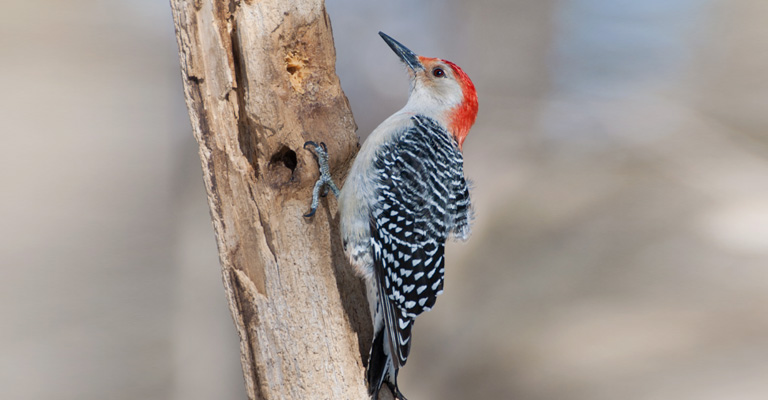
Do Woodpecker Migrate?
Well, it turns out not all woodpeckers migrate. In Canada and the United States, 22 species of woodpeckers are found. Out of the 22 species, only ⅓ of them (6 to 7) of them migrate south in winter.
On the other hand, some species of them stay in the same place where they nest year-round. They are sap eaters and consume suet (occasionally), insects, nuts, and acorns to stay warm during the winter.
Such a rich diet allows them to survive the cold without migration. The Pileated, Red-bellied, Downy, and Hairy Woodpeckers are on this list.
It’s important to note that, woodpeckers who migrate are specialized eaters, meaning they can be on a special diet for adaptation. Plus, they are not highly fond of rich-fat foods. And thus, migration is the only way out to survive the cold.
Why Do Birds Migrate South?
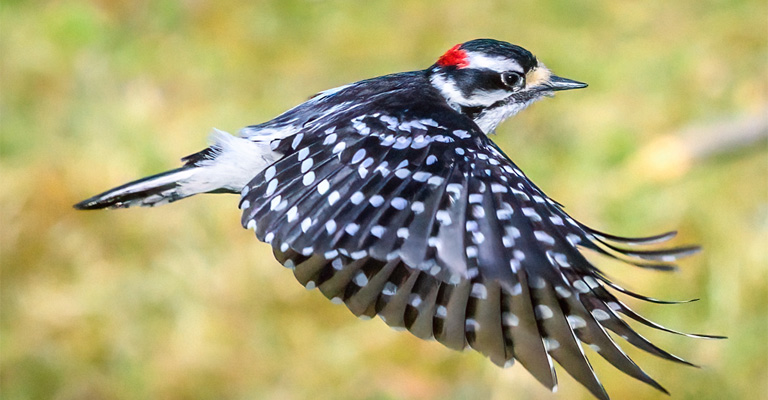
Now, a question may hit your mind, Why South? The migratory birds can fly anywhere but south. You can learn more about it here.
In brief,
In the Southern Hemisphere, lies the countries – Uruguay and Paraguay, South Africa, Zambia, and a few countries in Asia.
The countries of the South are significantly warmer during the winter of the Northern Hemisphere. Plus, the availability of food is also abundant.
No one could beat the winter in the north. Temperature is below average. It’s water freezing cold.
Woodpeckers rely on insects for protein. In winter, even the insects remain under the soil, and their availability is highly compromised. And that’s why most birds migrate south for warmer climates and for the availability of food.
Woodpeckers That Migrate:
As we came to know, some woodpeckers migrate and some don’t. Below is a list of woodpeckers that migrate. Following that, you will also have a list of woodpeckers that don’t migrate.
1) Northern Flickers (Colaptes auratus)
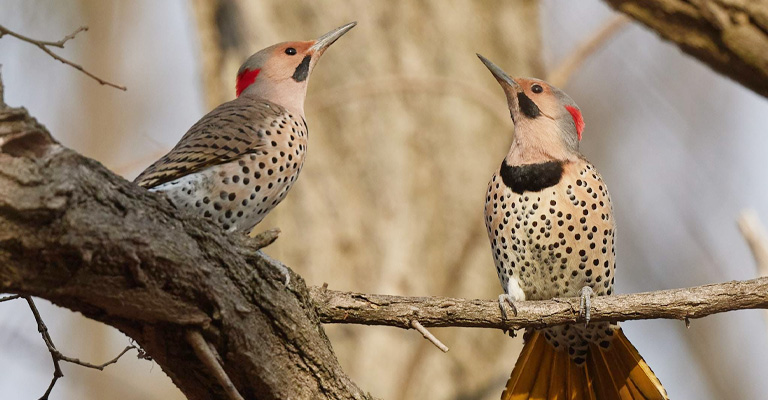
The Northern Flickers, amongst the woodpecker species, migrate to the south during the fall and return north again in the spring. They mostly live in Alaska, Newfoundland, Florida, and Mexico.
They have two subspecies: the Yellow-shafted Flicker in eastern North America and the Red-shafted Flicker in the western part of the continent. Both species undertake migration due to the change in temperature and less availability of food.
2) Red-headed Woodpecker (Melanerpes erythrocephalus)
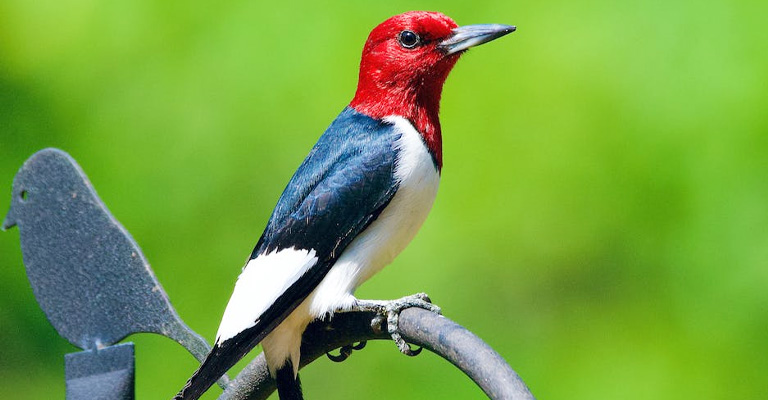
The breeding ground of the red-headed woodpecker is in Canada and the United States. In winter, they would migrate to Florida and the Gulf Coast in search of open woodlands and grasslands.
The birds are popular for their versatile plumage and they are often noticed around farms and rural areas.
Even though they store foods like nuts and acorns in tree trunks and cavities, it may still not be enough to pass the winter and they have to move on.
3) Yellow-bellied Sapsucker (Sphyrapicus varius)
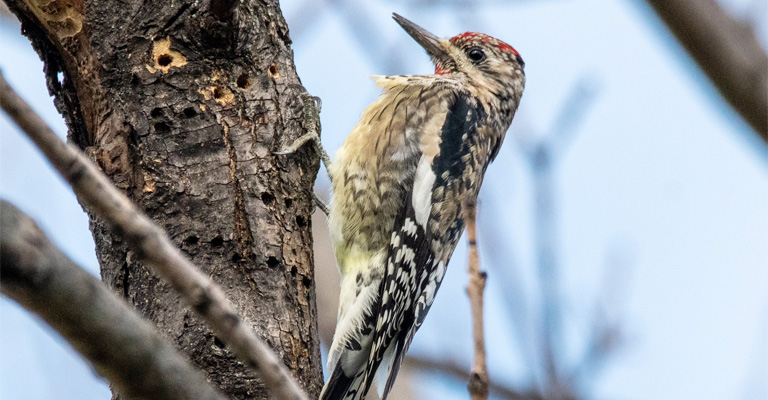
They are the smallest of the woodpeckers to have a red crown. They breed in northeastern North America, Canada, Newfoundland, North Dakota, Missouri, New England, and North Carolina.
In winter, they migrate to the southeastern United States, the Caribbean, and Central America. Some of them also go to Florida, Texas, Missouri, and New Jersey.
The woodpeckers are the quietest of all and they feed on tree sap by drilling holes. After some time, they return to consume the sugary liquid. It’s a special way to prepare the dish!
4) American Three-toed Woodpecker (Picoides dorsalis)
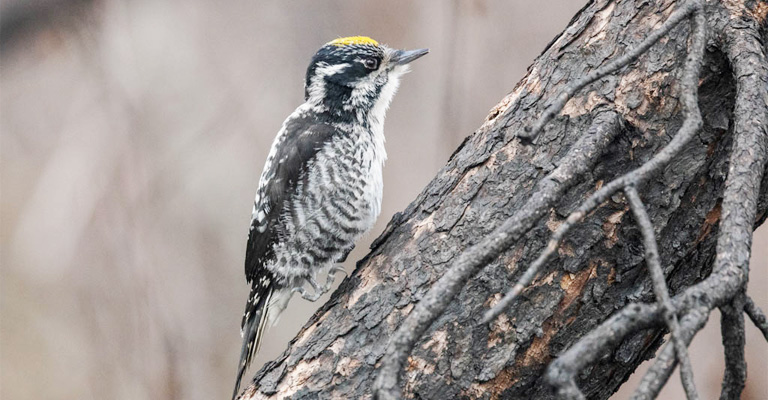
These woodpeckers are unique in color and habitat. They only have two colors – black and white, with a comparatively shorter beak than other woodpeckers.
They mostly live in the northern coniferous forests of North America. The American Three-toed are mostly known for their nomadic nature. Plus, not all of them migrate too.
Only some of them exhibit migratory behavior and move to lower elevations during the harsh winter cold in search of food.
They genuinely look for areas after a fire or insect breakout. It’s a unique trait that only a few woodpeckers show, including the Black-backed Woodpeckers.
Here are some of the common woodpeckers who migrate. The list also includes Hairy, Lewis’s, Red-Bellied Woodpeckers, Williamson’s Sapsuckers and Red-breasted Sapsuckers.
All these birds show migratory behavior in winter. Some travel short distances while some prefer to travel longer! It’s amazing how they fly from country to country without a passport 😀
Woodpeckers That Don’t Migrate:
Now, here’s a list of woodpeckers that don’t migrate and prefer to stay where they are during the winter. They make all the preps for that.
- Golden Fronted Woodpecker
- Downy Woodpecker
- Acorn Woodpecker
- Ladder Backed Woodpecker
- Red-Cockaded Woodpecker
- Black-Backed Woodpecker
These woodpeckers are mostly non-migratory. They prefer to stay in their nesting grounds year-round and do not undertake long-distance journeys.
Last Words
Among the 240 different species of woodpeckers, only a few of them migrate. Others have learned to adapt to the harsh weather and prefer to stay around within the same nesting region. These birds are quite territorial and would fight it hard to protect their territories.
Do woodpeckers migrate? You have the answer now. We would advise you to help the birds out in winter and provide them with food in bird feeders. They are less visible in winter, but it will surely help them eliminate the scarcity of food in winter.
Do you like our article? Let us know in the comment section how our article has helped you. Share our work with others. We will soon come back with another article, this time on the lifespan of owls.